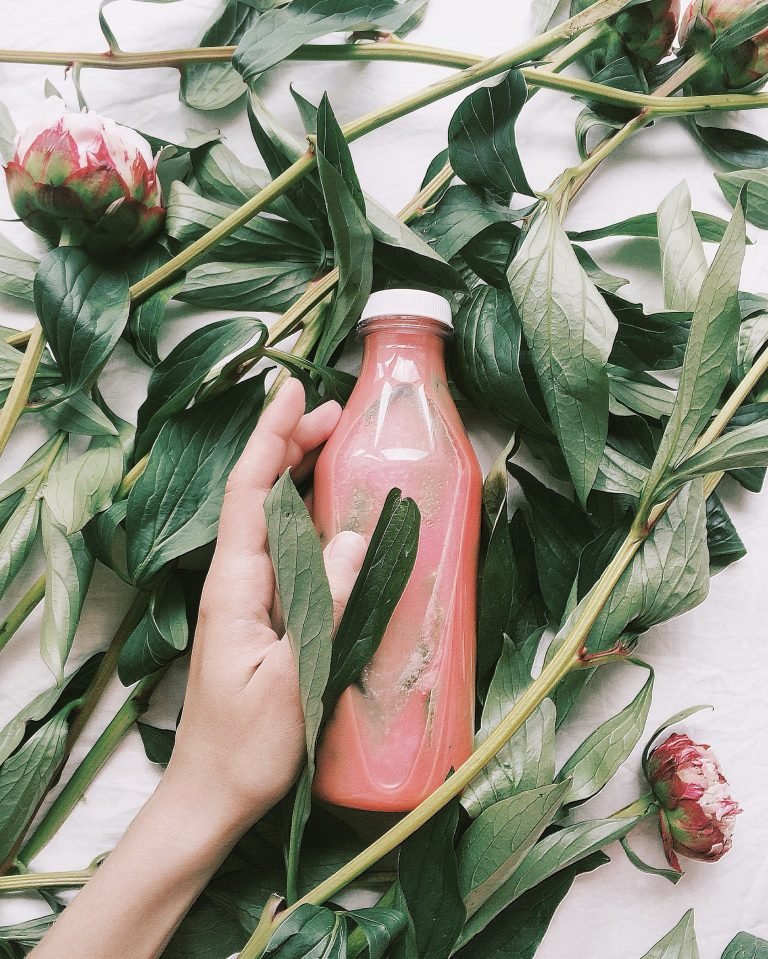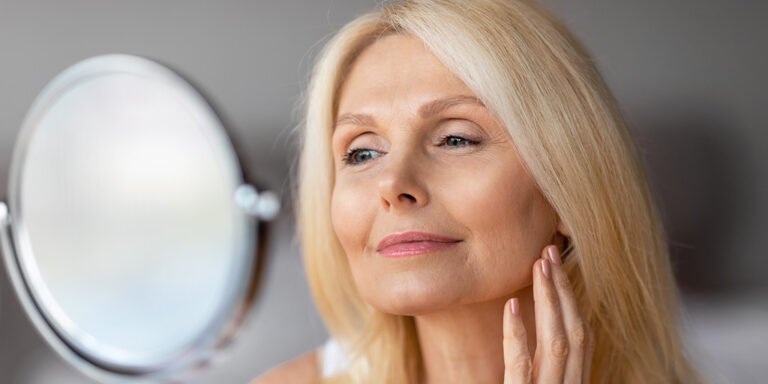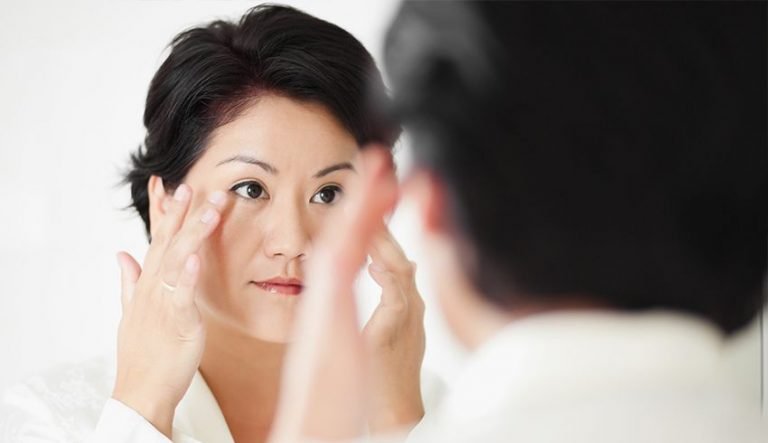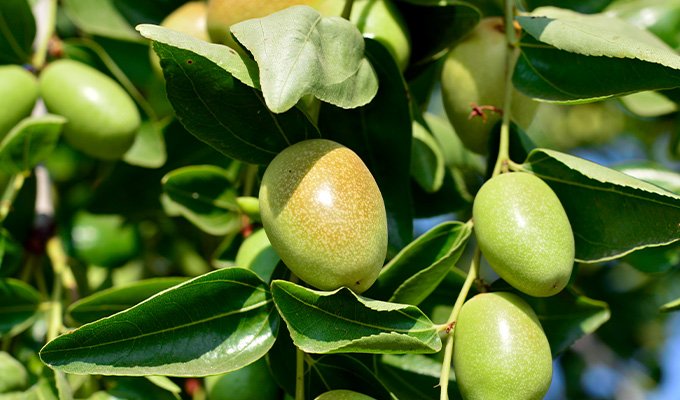Dermatologist’s Natural Treatment of Rosacea
Information on dermatologists’ natural treatment of rosacea is not a topic you will commonly see. Rosacea is an inflammatory skin problem and we in the dermatology profession tend to treat it with prescriptions. This is good for stubborn rosacea flareups, but rosacea is a lifelong skin condition that requires constant management. The more you can do to naturally help your skin resist rosacea flare ups, the better!
What this means is that the more you can stack your lifestyle and skin care choices towards controlling rosacea, the less of a struggle you will have with it and the less you will need to rely on prescription drugs.
You will see drug companies, including those that make oral antibiotics, advertise their products with compelling promises. Yes, they may work, but since rosacea is a long-term skin problem, I don’t consider long term oral antibiotics an ideal solution.
I try to setup my patient’s skin with a natural and holistic approach for rosacea control. We use oral antibiotic treatment as a last resort when rosacea flares up in a stubborn way. – Dermatologist Dr. Bailey
I work tirelessly with my patients to develop a unique management approach for their rosacea that fits their lifestyle and preferences. I do this with a comprehensive foundation of lifestyle, diet and skin care. I consider this a holistic dermatology approach to rosacea management and treatment – yes, I consider diet and lifestyle choices part of rosacea ‘treatment’.
Rosacea is an inflammatory condition of the skin. Like other chronic health conditions that we now understand to be linked to total body inflammation, such as psoriasis, high blood pressure, heart disease, diabetes and metabolic syndrome, rosacea is impacted by your lifestyle choices.
For over 30 years I have given my rosacea patients holistic advice to help them control their rosacea. The advice includes:
-
diet recommendations to reduce systemic inflammation and potentially help control rosacea,
-
lifestyle choices that reduce systemic inflammation to also help heal rosacea, and
-
a holistic skin care routine to control rosacea.
I build upon this foundation by adding medicated topical prescription skin care products.
Skin care to calm the inflammation of rosacea

I’ve written extensively about my skin care recommendations to control rosacea. I created a Rosacea Therapy Skin Care Kit to help take the guesswork out of rosacea skin care. It offers the best Complete Skin Care Routine to cover all the essential bases to control rosacea using the care that you give to your facial skin. I, and many thousands of my patients, struggle with rosacea. This is the routine that we use as the foundation of our skin care. I add prescription topical medicines to this routine. I only use oral antibiotics as a last resort and prescribe them for short term to control the skin when it flares up in spite of our best efforts.
For over 30 years, my approach to treating rosacea in my dermatology practice has been holistic.
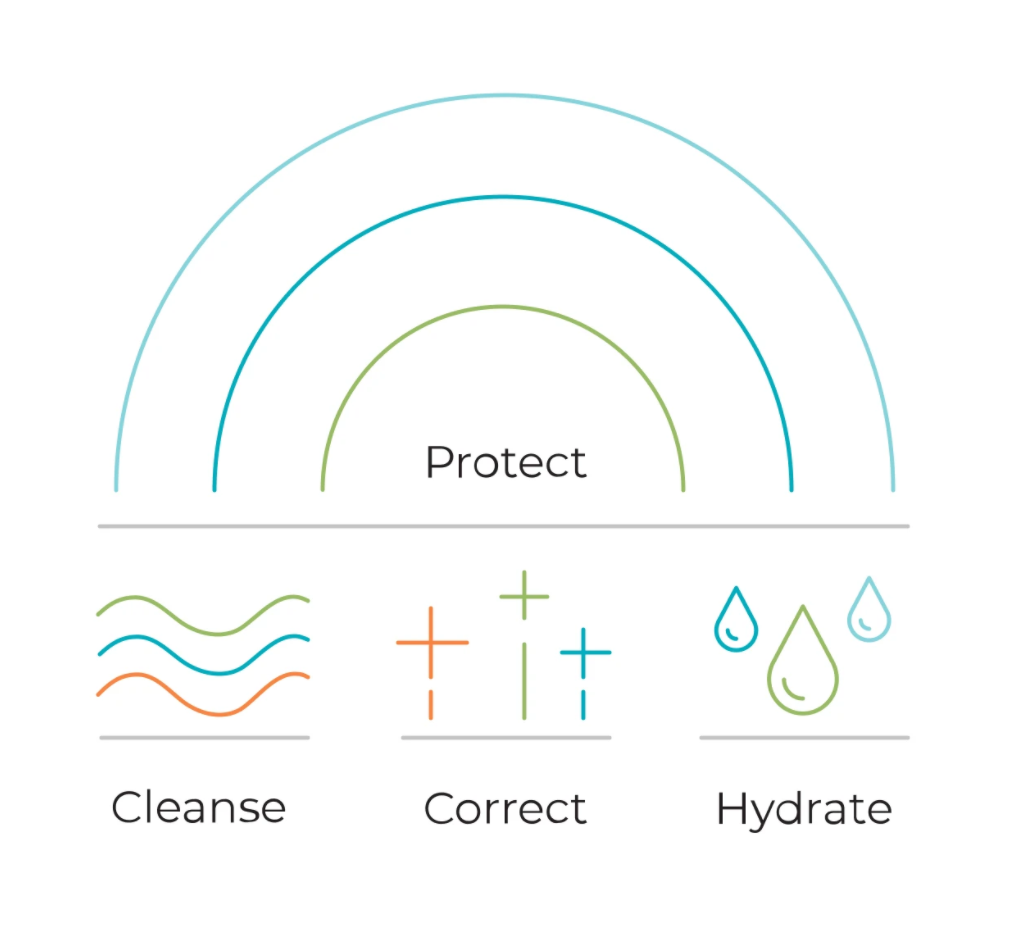
My treatment focus in dermatology for all skin problems is to use the body’s natural healing resources to help control systemic inflammation, and thereby skin inflammation. The diet and lifestyle choices that I recommend reflect this goal. I also create a supportive skin care routine that provides everything the skin needs with synergistic products designed for the 4 essential skin care steps of CLEANSE, CORRECT, HYDRATE, PROTECT. I call this a Complete Skin Care Routine™. We avoid products that work at cross purposes for a given skin problem – this is especially important when it comes to rosacea!
This holistic approach to treating rosacea isn’t the norm. I see many patients whose previous physicians managed their rosacea with oral antibiotics alone.
My bias is that the unintended consequences of taking chronic oral antibiotics make this a last resort for rosacea treatment. My patients achieve good control of their rosacea with my holistic approach; only my toughest rosacea patients require oral antibiotic treatment to control their skin. – Dermatologist Cynthia Bailey, MD
My holistic approach to treating rosacea covers a lot of detailed information. I’m going to outline my key points for diet and lifestyle in this updated 4th post of this Rosacea Blog Series. I’m updating each post in 2022. Prescription skin care, oral therapy and procedures will be covered in my final fifth post of this rosacea series.
All the posts are listed below.
In addition to a complete supportive skin care regimen, I recommend that my rosacea patients consider changing specific dietary habits and activities to help fight physiologic inflammation that will in turn help to control the skin inflammation of their rosacea.
What are the top supportive diet recommendations that I give to my rosacea patients?
1. A plant-slant, healthy fats, whole foods and fiber-rich diet can help reduce systemic physiologic inflammation, including rosacea.
A plant-slant whole foods fiber-rich diet is widely agreed by medical professionals as the ideal diet for anyone with an inflammatory health condition. We know that a diet like this is anti-inflammatory and will help to control inflammation from many causes. It’s a veggie heavy diet that’s very similar to the current recommendation from doctors and dietitians for optimal health.
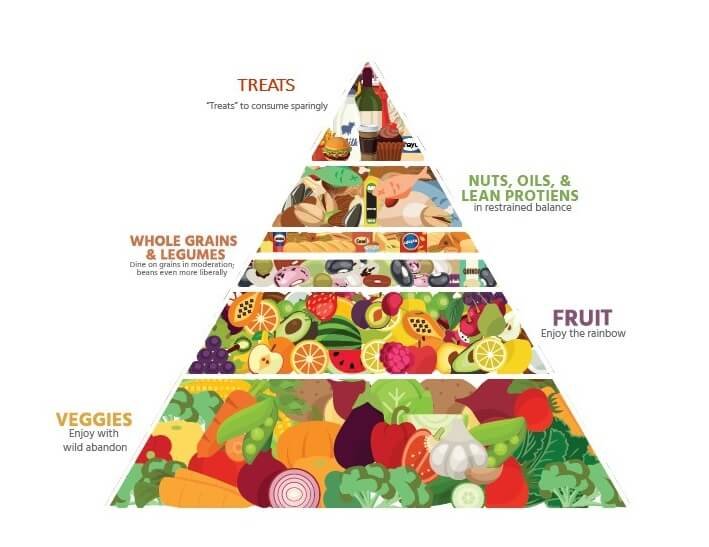
I also introduce patients to the concept of alkaline physiologic pH shifts in the body from foods. The alkaline/acid concept of foods is controversial, but my experience and opinion is that it matters; the concept is that foods which create a slight alkaline pH shift when you absorb and process them are associated with less physiologic inflammation.
Whether it’s the pH or the consequences of how your body resets the pH after digestion and absorption, who knows. But foods that are considered ‘alkalinizing’ are also the foods you know are healthy such as veggies, fruits and beans. Sugars, alcohol, highly processed foods and refined carbs result in a slight acid load upon digestion. Your body brings the pH back to neutral and spills the acid in your urine. Measuring urine pH gives you information about how your diet is impacting your pH. I have found that this in turn is associated with less inflammation and feeling better overall.
I describe this in my Diet Guide Ebook. You can download it for free. Or, you can read more about it in my 3 post series which starts with The Alkaline Mediterranean Diet. Yes, I know that the acid/alkaline diet concept is controversial in my profession. That said, it is the diet I strive to live on and it helps all of my inflammatory health issues including rosacea and its co-complexion spoiler, facial seborrhea.
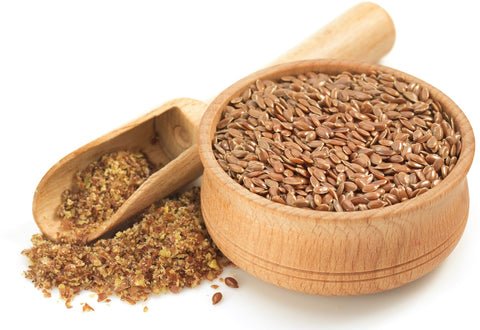
2. Chose healthy fats including freshly ground flax seeds and olive oil.
Freshly ground flax seeds are the most potent plant source omega 3 fatty acids to help heal inflammation, including facial redness from rosacea. It’s easy to add a handful to your food and it’s a great overall health booster. My post on flax seeds is titled Age Beautifully, Fight Cancer and Prevent Heart Disease by Adding Flax Seeds to Your Diet
Extra virgin olive oil is the other healthy fat that I recommend you add to your diet. It has well proven health benefits for fighting heart disease, autoimmune problems and other inflammation-related health condition. Extra virgin olive oil is rich in healthy fats, anti-inflammatory, immune-regulatory and antioxidant components and is the fat/oil of choice in my opinion. It’s also delicious! I use it for salad dressings, low-heat sautéing, I top soups and stews with it and we dip bread in it instead of using butter.
3. Add foods with live probiotics to your diet to help heal inflammatory skin problems like rosacea.
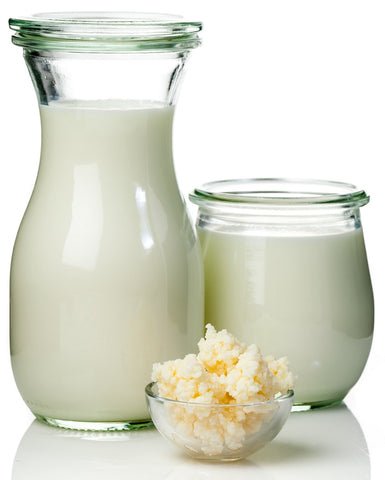
A healthy intestinal microbial population (microbiome) is an area of current study for rosacea.
In a study of over 50,000 Danish patients with rosacea, there was increased prevalence of intestinal diseases including celiac disease, Crohn’s disease, ulcerative colitis, Helicobacter pylori infection (HPI), small intestinal bacterial overgrowth (SIBO), and irritable bowel syndrome. If you have gastrointestinal symptoms along with rosacea, it’s worth a trip to your doctor for evaluation. In my experience, you need to be firm about demanding this work up, my celiac was missed for over 20 years.
It makes sense to me that the gut-skin axis is closely related. I’ve been saying for years that we are what we eat, including our complexion; that we need to pay attention to our intestinal health, including stewarding our intestinal microbiome. This means eating probiotic rich foods and the foods that the good microbes need to thrive in our intestines (the plant-slant diet that I mentioned above). In my observation, the best source of probiotics comes from naturally fermented foods such as kefir (or yogurt), instead of probiotic supplements. I discuss probiotics in my two-part series on kefir. The first post in the series is Dermatologist’s Recommendations for Natural Skin Health: Kefir the best probiotic for healthy skin. Yogurt, and possibly kefir, can trigger some people’s rosacea, so you need to try them carefully.
The reason I specifically recommend probiotic rich foods is because over the course of my career, rosacea and the stomach germ Helicobacter pylori are occasionally linked in the scientific literature. Eating probiotic rich foods regularly may help diminish the presence of this organism in the gastrointestinal track. I’ve had so many patients whose rosacea benefited from H. pylori treatment that I think it’s a good idea to try to discourage this bacteria by filling your tummy with healthy microbes instead.
Alternatives to probiotic rich foods include probiotic supplements from high quality natural food stores, but buy the highest quality you can because these living cultures require care or else they die before you actually have a chance to use them.
Probiotic rich foods and stewardship of our intestinal microbiome by eating high fiber foods like beans is now a well-recognized approach for reducing total body inflammation to counter chronic disease. This was not known back when I began recommending the approach to my dermatology patients! I’m patiently waiting for physiologic inflammation to finally get linked to urinary acidic pH. We’ll see.
4. Avoid common rosacea trigger foods to help control rosacea naturally.
The list of rosacea trigger foods is varied and different for each person. They are often divided into heat-related, alcohol-related, pepper-related and cinnamaldehyde-related (which included tomatoes). You can see that those categories don’t encompass everything. Some of the more commonly listed foods include:
- spicy foods,
- hot beverages,
- dairy foods,
- citrus fruit foods,
- chocolate,
- vanilla,
- soy sauce,
- vinegar,
- spinach,
- some beans,
- eggplant,
- tomatoes,
- alcohol.

Along with the list I just mentioned, there are other less obvious culprits that are worth considering. Just yesterday, a rosacea patient told me she figured out her flare ups were triggered by avocados. When she gave them up her face cleared. When she did a re-challenge, her skin broke out again.
Foods probably trigger rosacea by their interplay in the complex inflammatory and vasoregulatory cascades in the skin of rosacea patients. We are only beginning to understand this cascade and it’s complicated!
Try to notice if there are any specific food types that seem to be associated with your skin’s flare ups. When you think that you’ve identified a trigger food try avoiding it and observe your skin for changes. If your rosacea calms down, confirm your suspicion with a re-challenge. If your skin flares up again you may have identified one of your true food triggers.
Rosacea Herbal Treatment
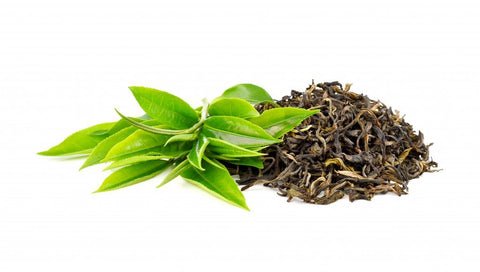
The best herbal remedies for soothing rosacea-prone inflammation are green tea and oats. In my 30+ years of treating rosacea, I’ve seen the most consistent results with them. Other options you will find include aloe vera, licorice, feverfew, coffeeberry and caffeine, chamomile, turmeric, niacinamide (vitamin B3 found in foods like wheat, beef and fist), tea tree oil, lavender oil, camphor oil, and mushroom extracts.
Unfortunately, rosacea creates such sensitive skin that I’ve seen aggravation of rosacea by skin care products containing niacinamide, tea tree and other essential oils. My preference is to experiment with herbal treatment by brewing and drinking teas. There are many brands that blend licorice, feverfew, chamomile and lavender. Let the tea cool before enjoying since hot beverages can trigger rosacea flushing.
Turmeric is easy to add to food (though it is often accompanied by spices that trigger rosacea) or taken in capsule form (I take one with each meal). Basically, caring for rosacea-prone skin requires caution and applying some of the herbal remedies listed above may irritate sensitive rosacea-prone skin.
Green tea and rosacea benefits
Green tea polyphenol antioxidants are well proven to sooth inflamed skin and are well tolerated by rosacea. I’ve had patients create toners from steeping green tea, letting it cool and applying it to their face. The best results come from using pharmaceutically pure and concentrated Green Tea Antioxidant Skin Therapy cream twice daily; containing the equivalent EGCG active polyphenol antioxidants from 500 cups of brewed green tea per ounce of cream, this green tea preparation is the most powerful available. It is fortified with caffeine, chamomile, cucumber and resveratrol for additional benefit.
The Green Tea Anti-Oxidant Skin Therapy helps to calm my red rosacea prone complexion like nothing else. … I no longer felt like my skin was glowing red under any foundation product. People stopped asking me, why is your face so red? This is an excellent product to calm down rosacea!! MKR
Oats and rosacea benefits
Oats are also well proven to sooth inflamed skin and have been used in clinical dermatology for decades. The FDA has even approved them as a skin protectant. Oats contain anti-inflammatory and antioxidant compounds, among others, that benefit skin. Oats are an important ingredient in my Calming Zinc Bar soap; fortified with pyrithione zinc to help discourage the Pityrosporum skin yeast that often overpopulates inflamed facial complexions. Calming Zinc also provides herbal calendula and botanical shea butter to sooth redness prone skin so that it can heal.
Combine green tea and oats to sooth rosacea
I combine the two most important herbal remedies of green tea and oats in my popular Redness Relief Kit. The added herbal benefits of caffeine, resveratrol (from grapes), calendula and shea butter are well proven by my patients and customers to help heal their rosacea-prone skin. This kit combines the two most essential products that I use to create a rosacea-healing skin care routine.
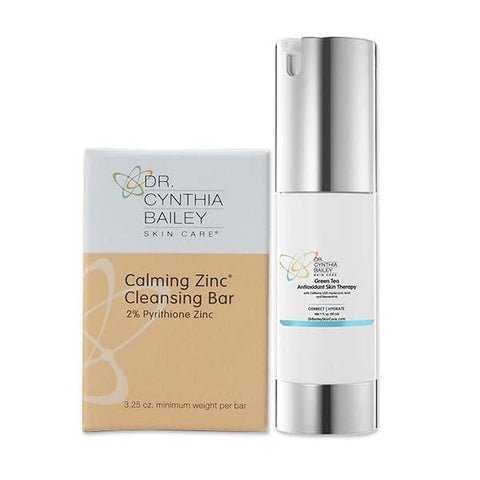
Amazing! I have been using the Facial Redness Relief Kit for a month now. I’ve had seborrhea dermatitis and rosacea for over 40 years and this combo has made
more difference than anything ever prescribed. I thought the Calming Zinc soap might be irritating but it is not and I can use it twice a day when needed.
The Green Tea Antioxidant has almost eliminated the redness of my type I rosacea. Thank you! Frances
The bottom line with herbal rosacea treatment:
We still have a lot to learn. I’ve seen the best results with green tea, oats, chamomile and caffeine. I build these into a Complete Skin Care Routine that provides a rosacea-friendly moisturizer to help barrier damaged rosacea-prone skin heal along with a non-irritating SPF. What is most important is to think about rosacea holistically – skin care, diet, lifestyle and natural remedies for both the skin and body.
What lifestyle and activity recommendations can help you control your rosacea?
Reduce stress to control rosacea.
 Yes, stress can trigger rosacea. Most rosacea patents turn beet red when they are upset, embarrassed or nervous. The pimples and inflammatory rash of rosacea often follow. Rosacea also flares up during the holidays, which for many of us are stressful. Do what you can to avoid or manage your stress level and see if it helps your rosacea.
Yes, stress can trigger rosacea. Most rosacea patents turn beet red when they are upset, embarrassed or nervous. The pimples and inflammatory rash of rosacea often follow. Rosacea also flares up during the holidays, which for many of us are stressful. Do what you can to avoid or manage your stress level and see if it helps your rosacea.
I’m a big fan of yoga for stress reduction and I’ve written about its health benefits. (Of course, I would not recommend hot yoga for someone suffering from rosacea!) Other options include meditation, biofeedback, taking time to be outdoors, spending time with friends who don’t cause you stress, being less demanding of yourself and living life more slowly etc.
Avoid exposure to temperature extremes, sun and strong chapping wind.
Temperature extremes can trigger rosacea including saunas and hot tubs as well as the weather and indoor temperatures. It also includes exertional exercise that can cause you to get overheated.
Control facial flushing conditions as much as possible.
Facial flushing from niacin supplements can trigger rosacea. This is pretty easy to avoid. Other causes of facial flushing are much trickier to control including menopausal hot flashes and exertion from a healthy exercise workout.
When your face becomes flushed, cool your skin to help constrict the facial capillaries and shunt the increased blood flow away from the skin. Do this with a spritz of cool water or by applying a cool cloth to your red facial skin. In a pinch, I use a cool beverage container such as a glass of water or my water bottle. I’ve usually got something cool handy.
The bottom line with treating rosacea naturally using diet and lifestyle:
The good news is that you can make decisions that help you control your rosacea. When your rosacea is well controlled with diet and supportive skin care you may be able to sneak up on your skin and ask it to tolerate a small amount of the triggers that you love the most.

I use the routine in my Rosacea Therapy Kit to control rosacea from the outside in. I recommend exploring the diet and lifestyle options I’ve just listed to help control rosacea from the inside out.
Know that when it comes to flare ups of rosacea, it’s often a matter of degree; doing strenuous exercise in the full sun on a windy day while suffering from hot flashes, after eating spicy Mexican food and drinking a citrusy margarita, and at a time when your rosacea is already active, well, that’s just asking for trouble! Control as many of these variables as you can and gain better control of your rosacea.
To learn more about my dermatologist’s tips for skin care to help support rosacea healing, click here.
My 5 Article Series on Rosacea:
What is Acne Rosacea?
What Are the Skin Symptoms of Acne Rosacea?
Rosacea Skin Care Tips from My Dermatology Practice
Acne Rosacea; Dermatologist’s Natural Treatment of Rosacea (this post)
Prescription Medication and Cosmetic Procedures to Treat Rosacea
Cited Scholarly Reference Sources
1. Wagenaar CA, van de Put M, Bisschops M, et al. The Effect of Dietary Interventions on Chronic Inflammatory Diseases in Relation to the Microbiome: A Systematic Review. Nutrients. 2021;13(9):3208. Published 2021 Sep 15. doi:10.3390/nu13093208
2. Bhargava R, Kumar P, Kumar M, Mehra N, Mishra A. A randomized controlled trial of omega-3 fatty acids in dry eye syndrome. Int J Ophthalmol. 2013 Dec 18;6(6):811-6. doi: 10.3980/j.issn.2222-3959.2013.06.13. PMID: 24392330; PMCID: PMC3874521.
3. Gaforio JJ, Visioli F, Alarcón-de-la-Lastra C, et al. Virgin Olive Oil and Health: Summary of the III International Conference on Virgin Olive Oil and Health Consensus Report, JAEN (Spain) 2018. Nutrients. 2019;11(9):2039. Published 2019 Sep 1. doi:10.3390/nu11092039
4. Weiss E, Katta R. Diet and rosacea: the role of dietary change in the management of rosacea. Dermatol Pract Concept. 2017;7(4):31-37. Published 2017 Oct 31. doi:10.5826/dpc.0704a08
5. Egeberg A, Weinstock LB, Thyssen EP, Gislason GH, Thyssen JP. Rosacea and gastrointestinal disorders: a population-based cohort study. Br J Dermatol. 2017 Jan;176(1):100-106. doi: 10.1111/bjd.14930. Epub 2016 Oct 31. PMID: 27501017.
6. Wagenaar CA, van de Put M, Bisschops M, et al. The Effect of Dietary Interventions on Chronic Inflammatory Diseases in Relation to the Microbiome: A Systematic Review. Nutrients. 2021;13(9):3208. Published 2021 Sep 15. doi:10.3390/nu13093208
7. Emer Jason, MD, Waldorf Heidi MD et. al. Botanicals and Anti-Inflammatories: Natural Ingredients for Rosacea, Semin Cutan Med Surg 30:148-155, 2011 Elsevier Inc
8. Wu J. Treatment of rosacea with herbal ingredients. J Drugs Dermatol. 2006 Jan;5(1):29-32. PMID: 16468289.
9. Ferzli Georgina MD MS, Patel Mital MD, et. al., Reduction of Facial Redness with Resveratrol Added to Topical Product Containing Green Tea Polyphenols and Caffeine, JDD, July 2013, Vol 12 (7), 770
10. Domingo DS, Camouse MM, Hsia AH, et al. Anti-angiogenic effects of epigallocatechin-3-gallate in human skin. Int J Clin Exp Pathol. 2010;3(7):705-709. Published 2010 Aug 5.
11. Drummond Peter D, Su Daphne, Increases in Psychological Stress Precede Flares of Rosacea: A Prospective Study, J Clin Exp Dermatol Res, 2017. 8:4
12. Heisig M, Reich A. Psychosocial aspects of rosacea with a focus on anxiety and depression. Clin Cosmet Investig Dermatol. 2018;11:103-107. Published 2018 Mar 6. doi:10.2147/CCID.S126850
13. Buddenkotte J, Steinhoff M. Recent advances in understanding and managing rosacea. F1000Res. 2018;7:F1000 Faculty Rev-1885. Published 2018 Dec 3. doi:10.12688/f1000research.16537.1



